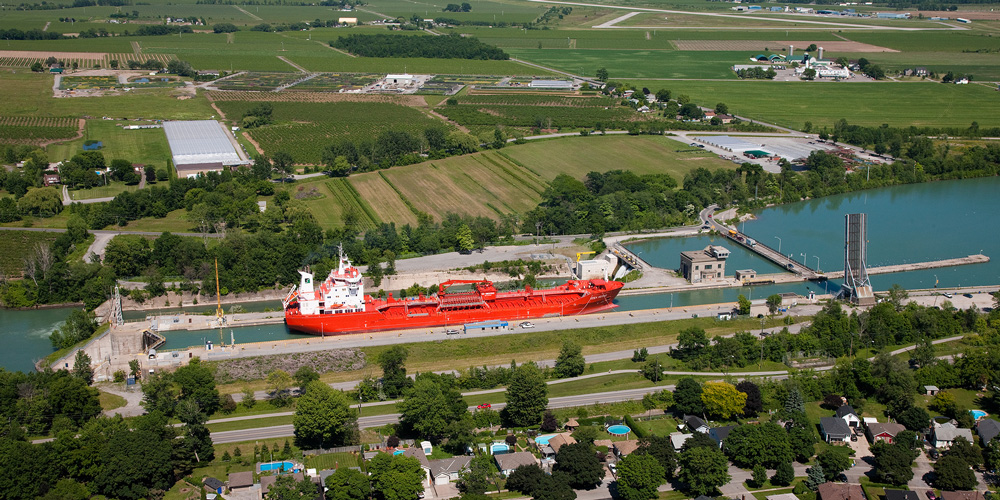St. Lawrence Seaway Closes 46th Navigation Season
January 4, 2005
Cornwall, January 4, 2005 — The St. Lawrence Seaway officially closed for the season on December 30, 2004, with the passage of the McKeil Marine integrated tug and barge, McCleary’s Spirit, through the St. Lambert Lock at 5:51 a.m. in the Montreal/Lake Ontario section. The Seaway opened its 46th shipping season on March 25 and remained open for 281 days in 2004.
The Welland Canal section closed at 5:19 p.m. on December 31, with the transit of the Canada Steamship Lines vessel CSL Niagara.
“We are pleased to report excellent traffic results, with an overall estimated 5.3% increase in tonnage this year,” said Richard Corfe, President of The St. Lawrence Seaway Management Corporation. “The growth in traffic shows across the board, with higher numbers for both lakers and ocean vessels, and greater tonnage in bulk and in general cargo. I think this attests to a strong economic recovery that will continue to bring vessels to the Seaway next year as well.”
The Seaway has benefited from the strength of the steel industry at home and the need for imported steel from abroad. Labour disputes in the iron ore industry and supply problems in the coal industry created low inventory levels, and a half million-tonne shortfall in shipments on the Seaway through the summer. Once these issues were settled, continued Corfe, “we agreed to stay open longer, to accommodate our clients who were trying to make up for lost ground. Water levels in the Lakes remained sufficient to ensure that navigation could continue at full draft throughout most of December.”
This year, substantial gains were made in the movement of general cargo, principally iron and steel, driven by high prices for these goods. Coupled with modest gains in other bulk, such as coke and stone, and a near-doubling of scrap metal shipments, overall volumes are estimated to have increased over last year by 5.5% in the Montreal/Lake Ontario section (totaling 30.49 million tonnes) and 6.5% in the Welland Canal section (totaling 33.94 million tonnes).
“We aren’t relying solely on economic growth to power the turnaround in Seaway traffic,” Mr. Corfe pointed out. “Hwy H2O, our public awareness campaign, was a success. It has now evolved into a ‘branding’ project for the overall Great Lakes / St. Lawrence System, linking the St. Lawrence River ports, the Seaway ports and the Great Lakes ports into one marine highway, with 20 partners already signed on.”
“We are now seeing some early results from our initiative to grow our business. We have recaptured the movement of aluminum ingots from Sept-Iles to Toledo from rail; we have seen some Ontario grain moved by barge, as opposed to truck, from Prescott to Sorel; and we have determined the conditions necessary for attracting container movements to the system. We also expect to benefit indirectly from the booming China trade, which is now saturating West Coast ports. The East Coast is getting some of the overflow business, and we will be working to get a fair proportion of that through the Seaway next year.”
In the meantime, the Seaway is now closed for the winter to accommodate the annual maintenance program on its 13 Canadian locks and connecting channels. This year’s winter works program is again a substantial one, amounting to $5 million in the Montreal/Lake Ontario section and $20 million on the Welland Canal. Work will include improvements to bridges, locks, communications and power facilities, roads, weirs, and walls. The Seaway is expected to re-open in late March 2005.






